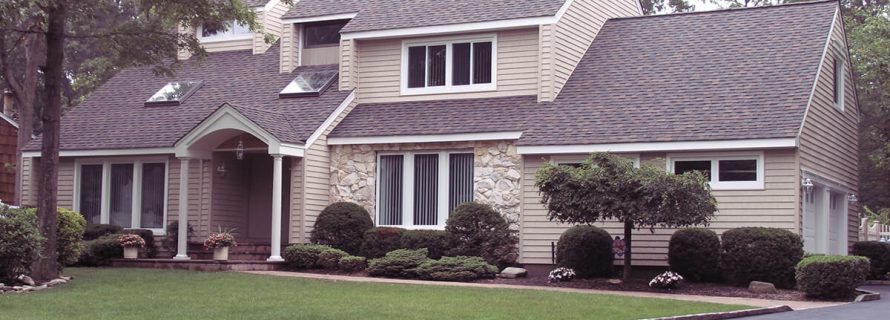How to select the best type of roof for your home

Not only does your roof provide a protective barrier to the outside, but it can also create a whole new look and feel for your house. There are many factors to consider before deciding which type of roof is ideal for your home. John Bernaudo, exterior design specialist at Alure Home Improvements, reviewed the different styles to help you choose the best one.
Gable roofs
One of the most common roofs, gable roofs are what you typically see in New England. The traditional “up and over” design allows water and snow to naturally slide off without any extreme upkeep in the winter. Bernaudo explained that this type of roof is one of the simpler and more affordable options, though it’s not necessarily the best choice for those in regions that are susceptible to hurricanes.
“They act like a wing and create lift during high winds, which can cause the material to peel off,” he noted.
Hipped roofs
Roofs with sides that slope down toward the wall are considered hipped. This is another common type of roof and is much better than a gable style because it can better perform during periods of extreme wind. Like gables, hipped roofs allow water and snow to slide off. However, a hipped style causes the inside of the home to have less space, making access to the attic more difficult. It can also require more complicated maintenance.
Mansard and gambrel roofs
These two roofs are very similar in that they have a slight slope at the top and a steeper portion below, creating a flat area at the top of the house. Because of the flat top, it’s not an ideal choice for those in regions with snow or strong winds. However, that attribute does have its advantages. Many consider the shape of the mansard and gambrel roofs to be aesthetically pleasing, and it also allows for more attic space.
Other factors to consider
When making a decision on which type of roof is best for you, it’s important to take advice from your roofing contractor. He or she will be able to provide you with professional advice and consider all additional factors, like your region’s climate, your home’s current roof framing, your budget and the roof’s longevity.
When considering the factors, climate should be the focus, explained Bernaudo, but there are many other points to review as well. When replacing a roof with a similar one, it takes the least amount of time, work and money. On the other hand, completely switching designs can be more time-consuming and expensive, though it may be worth it.
“Where the home is located, which direction the house faces and what type of weather it will be up against should be the biggest thing to consider when deciding on a roof,” he said. “[You should consider] functionality over the aesthetics.”
- Additions and New Construction
- All Exteriors
- Alterations
- Basements
- Bathrooms
- Customer Service
- Customer Stories
- Decks
- Design & Planning Show
- DIY
- Doors
- Educational Resources
- Extreme Makeover Home Edition
- Fashion Show
- General Remodeling
- Green Living
- Handyman Home Services
- Home Decor
- Home Entertainment
- Home Improvement
- Home Improvements
- How to Tips
- In The Community
- Kitchens
- Off-the-Wall Remodeling Stories
- Remodeling
- Resources
- Roofing
- Siding
- Social Media
- Sunrooms
- Tips & Tricks
- Trends
- Windows

